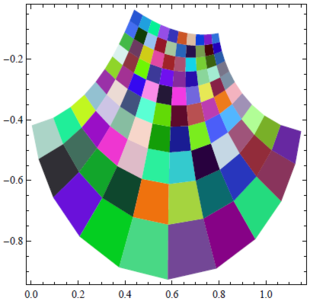| Additions to this web site no longer count towards good deed points.
|
| #
|
Week of...
|
Notes and Links
|
| 1
|
Sep 10
|
About This Class, Tuesday, Thursday
|
| 2
|
Sep 17
|
HW1, Tuesday, Thursday, HW1 Solutions
|
| 3
|
Sep 24
|
HW2, Tuesday, Class Photo, Thursday
|
| 4
|
Oct 1
|
HW3, Tuesday, Thursday
|
| 5
|
Oct 8
|
HW4, Tuesday, Thursday
|
| 6
|
Oct 15
|
Tuesday, Thursday
|
| 7
|
Oct 22
|
HW5, Tuesday, Term Test was on Thursday. HW5 Solutions
|
| 8
|
Oct 29
|
Why LinAlg?, HW6, Tuesday, Thursday, Nov 4 is the last day to drop this class
|
| 9
|
Nov 5
|
Tuesday, Thursday
|
| 10
|
Nov 12
|
Monday-Tuesday is UofT November break, HW7, Thursday
|
| 11
|
Nov 19
|
HW8, Tuesday,Thursday
|
| 12
|
Nov 26
|
HW9, Tuesday , Thursday
|
| 13
|
Dec 3
|
Tuesday UofT Fall Semester ends Wednesday
|
| F
|
Dec 10
|
The Final Exam (time, place, style, office hours times)
|
| Register of Good Deeds
|

Add your name / see who's in!
|

|
|
In this lecture, the professor concentrated on bases and related theorems.
Definition of basis
β  V is a basis if
V is a basis if
1/ It generates (span) V, span β = V
2/ It is linearly independent
Theorems
1/ β is a basis of V iff every element of V can be written as a linear combination of elements of β in a unique way.
proof: ( in the case β is finite)
β = {u1, u2, ..., un}
(<=) need to show that β = span(V) and β is linearly independent.
The fact that β span is the fact that every element of V can be written as a linear combination of elements of β, which is given
Assume  ai∙ui = 0 ai
ai∙ui = 0 ai  F, ui
F, ui  β
β
 ai∙ui = 0 =
ai∙ui = 0 =  0∙ui
0∙ui
since 0 can be written as a linear combination of elements of β in a unique way, ai=0  i
i
Hence β is linearly independent
(=>) every element of V can be written as a linear combination of elements of β in a unique way.
So, suppose  ai∙ui = v =
ai∙ui = v =  bi∙ui
bi∙ui
Thus  ai∙ui -
ai∙ui -  bi∙ui = 0
bi∙ui = 0
 (ai-bi)∙ui = 0
(ai-bi)∙ui = 0
β is linear independent hence (ai - bi)= 0  i
i
i.e ai = bi, hence the combination is unique.
Clarification on lecture notes
On page 3, we find that  then we say
then we say  . The reason is, the Theorem 1.5 in the textbook.
. The reason is, the Theorem 1.5 in the textbook.
Theorem 1.5: The span of any subset  of a vector space
of a vector space  is a subspace of
is a subspace of  . Moreover, any subspace of
. Moreover, any subspace of  that contains
that contains  must also contain
must also contain 
Since  is a subset of
is a subset of  ,
,  is a subspace of
is a subspace of  from the first part of the Theorem 1.5. We have shown (in the lecture notes page 3) that
from the first part of the Theorem 1.5. We have shown (in the lecture notes page 3) that  . From the "Moreover" part of Theorem 1.5, since
. From the "Moreover" part of Theorem 1.5, since  is a subspace of
is a subspace of  containing
containing  ,
,  must also contain
must also contain  .
.
Lecture notes scanned by Oguzhancan
Lecture notes uploaded by gracez























